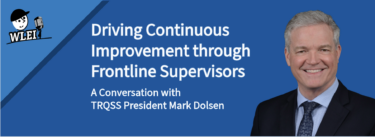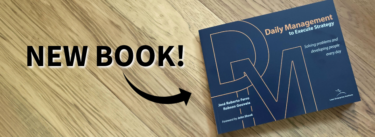I know it’s difficult, but try to remember life before your smart phone instantly connected you to the outside world, not only to talk, but to read the latest news or email that might come through.
Everyone has felt that fear or dread when we realize we have forgotten our phone or may have lost it. It’s not good, is it?
Oftentimes within an organization people have this same feeling of dread or drudgery going to work every day. Not because they’ve lost their phones (maybe some have), but because they don’t feel like they have the resources they need to be effective in their jobs. So they slowly lose confidence that leadership cares about their well-being or the daily issues that plague them.
I use a quick test to get a “finger on the pulse” about a company’s workplace culture by asking two very specific questions:
- Do you feel your organization has your best interest at heart? I get various responses to this question, anything from “Yes, they do,” to “No, they just consider me a number and expect me to do what I’m told.” I listen closely to the negative responses, then ask question #2.
- Do you come to work every day with the best interest of the organization at heart? Often people break eye contact with me at this point. Why do you think this is? It’s typically because people have been beat down by the lack of management support which therefore drives them to not care anymore.
As leaders, it is easy to place blame and say, “These people just don’t want to work,” or “So and so is a bad seed.” But these are assumptions. Do you really have enough information to know what’s going on with this person? Oftentimes what we fail to realize is the company could be partially to blame, it’s not always a problem with the individual. Managers often see trends and point a finger, but it takes time and empathy to look past the individual to what is really going on with the processes by which the work is getting done and the culture that supports the work. As a manager, you may not think this is part of your job, but it is essential.
If work is made engaging to a person it can become their passion or they can at least feel empowered to be a part of it. If work is mere drudgery, it can feel like a prison. Which would you prefer? As a leader, which kind of work culture are you trying to create for your team members?
Whatever role you may have in your organization (process owner, line supervisor, middle management or executive), it’s an eye opener for many people to begin to ask these questions and realize they could be creating the morale problems with their leadership practices. I often listen for key words in my interactions with the various levels within a company: we and they. “We” are usually describing the people who are in the weeds doing the work, “they” are usually management who are overseeing others. On occasion you hear something like, “We were told they wanted a reduction of costs.” (Of course, I listen for the word “us” in there somewhere or a “we” that applies to everybody and usually never find it). This is often a reflection of the separation between management and the people, which is sometimes typical of a top-down style of doing business.
Most people want to do a good job every day and want an environment of mutual trust. If this is missing and results become the main focus of the work, if leaders don’t respect people as the most important asset, it can slowly eat away at people like a virus through a computer system. Most organizations create their own morale issues and don’t realize it. Leaders browbeat team members with a top-down management style of telling or trying to persuade people to do whatever it takes to get the job done. For example, “I don’t want to hear about problems, just solutions.” After a while people become conditioned to just do what it takes to get through the day with minimal conflict. To me, this is one of the worst forms of waste: the waste of the extraordinary power of the human mind and its ability to think. Not to mention a waste of people’s ability to do great things when they work together.
A modern lean organization that focuses on processes, not only results, will get more buy-in from team members. Pro-active thinking on everyone’s part gradually becomes more prominent in the culture than defensiveness, reactiveness, or disengagement.
So how do you begin to change from a more domineering top-down management style to a more “lateral or equal” management style? Lean thinkers call it catchball. Catchball creates constant dialogue between the people doing the work at the 500 foot process level and management at a 25,000 foot process level to ensure that key performance indicators are being impacted, with key activities and objectives cascading down through the organization. Everyone is encouraged to think, engage with, and become a part of the improvement process versus being told “this is how it will be.”
If people feel they are part of a team and their role each day contributes to the greater good of the organization, they develop a new line of sight to the organization, searching for ways to eliminate waste, enhance their work, and contribute to the company’s long-term growth. This begins to evolve the “us” that too often goes missing. Then the we versus they mentality slowly dissolves.
So if you find yourself in a position to make a difference, start to ask questions like the two above. Your people will tell you what you need to hear. With some discipline and accountability, you can work with your senior leadership team and employees to change how you do business. Your people will slowly begin to trust you more and want to assist you in making a difference. It’s amazing to see a team of problem solvers purposefully identify gaps to try to improve their work processes, which helps everyone get those results we all covet. But first, as a leader you must be willing to walk the walk and prevent your people from partaking in wasteful actions. Be their resource and model the kind of leadership and problem solving you hope to see in them.






